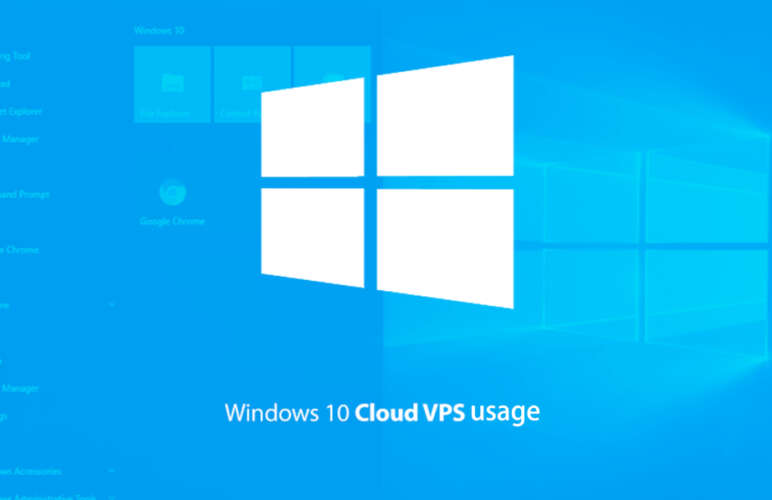5 Easy Steps to Change Your Domain Name

Recognizing the significance of a distinct domain name for establishing authority and trust with your audience is common knowledge. However, realizing the necessity for a domain name change can be a pivotal moment in enhancing your business’s online presence.
Whether you’re undergoing a rebranding initiative, aiming for increased visibility, or simply seeking a fresh start, the process may initially appear daunting for those lacking technical expertise. However, with proper guidance, it becomes a straightforward endeavor.
Additionally, ensuring the seamless integration of a new domain name is crucial to maintaining the smooth operation of your website, preserving search engine rankings, and delivering an optimal user experience.
This article will demystify the intricate process of transitioning from your old domain to a new one while preserving your existing website’s content, outlining five simple and actionable steps.
Jump To...
Understanding Fundamental Aspects of Domain Names

Every website is identified by a unique IP address, a sequence of numbers often challenging for users to remember. To simplify this, hosting providers assign domain names to websites, making the web search process more user-friendly.
The Domain Name System (DNS) plays a crucial role by associating these assigned names with their corresponding IP addresses, facilitating seamless navigation. A domain name typically consists of two essential parts: the chosen name, such as “Google,” and its ending, like “.com” or “.org.” When selecting a domain, opt for something easy to recall, relevant to your work, and ending with a common extension.
Registering a domain is akin to claiming your space online, distinguishing your website in the vast expanse of the internet. Consider a domain like www.techexplorer.com and break it down into its constituent parts to understand its structure and significance.
Server Type: The www, denoting the World Wide Web, signifies the web server.
Host Name: The core name of the domain, such as “techexplorer,” represents the hostname.
Extension: “.com” is the extension.
What are the necessary steps to change my domain name?

As your company expands its online footprint, it often presents new opportunities and challenges. At this juncture, your online platform should align with your evolving brand identity, potentially leading to the need for a domain transition.
The reassuring news is that changing your website domain is a manageable undertaking. You can seamlessly preserve all your existing content, ensuring a smooth experience for your regular visitors by effortlessly redirecting them to your new URL.
Whether you are on a WordPress domain or any other popular hosting service, the overall procedure for a domain change is universally applicable, with slight adjustments if necessary. Follow the subsequent clear and systematic step-by-step approach to guarantee a seamless transition.
Now, let’s delve into the specifics.

When making the shift from a free domain to a paid one, the selection of a custom domain becomes a critical decision. Numerous websites offer domain registration services, often coupled with hosting options.
It’s imperative to choose a domain that not only complements your brand but also aids in crafting the desired online image for your business. Additionally, prioritize selecting a domain that is easy to read and remember for your visitors.
1. Create Subdomains
You can try creating subdomains, which is an excellent multi-site strategy for further flourishing your online presence. For example, a photography website with the domain “capturedmoments.com,” initially dedicated to showcasing photos, decided to diversify.
They can manage distinct activities by creating subdomains like “prints.capturedmoments.com” for selling prints and “blog.capturedmoments.com” for sharing insights.
Indeed, by opting for subdomains instead of multiple domains, the website can streamline its multi-site management. This strategy not only facilitates an organized approach to handling diverse activities but also contributes to the enhancement of organic search traffic for each distinct subdomain.
2. Create a Backup of Your Website Data

Securing a copy of your website content before initiating a domain name change is a prudent step to prevent any disruptions to your work. While the process may seem intricate, downloading website content is relatively straightforward. WordPress users, in particular, benefit from a variety of plugins designed to simplify the content download process.
There are two main approaches to downloading website content: a manual method and the utilization of WordPress plugins. Both options offer effective ways to safeguard your website’s content and ensure a smooth transition during the domain name change process.
Manual Backup
Backing up your website pages manually is a straightforward process. Begin by creating a designated “Backup” folder on your computer. Next, access your website through FTP (File Transfer Protocol) and copy all the relevant website files to the newly created “Backup” folder. This ensures that you have a local copy of your website content readily available for reference or restoration if needed during the domain name change process.
Utilizing WordPress Plugins
Multiple solutions are available to facilitate the transition in a WordPress domain change. These tools are designed to redirect your URLs effectively and preserve the content of your domain’s pages. Some noteworthy options include Duplicator, Redirection, and Backup Guard, each serving specific functions to streamline the process and ensure a smooth transition.
Duplicator: If you wish to back up when changing hosts, Duplicator is your go-to tool. It effortlessly downloads your entire WordPress site, including plugins and themes, into a convenient .zip file. This tool helps you back up your website files and guarantees your migration process is smooth and more manageable.
Redirection: Meet the Redirection plugin – your ally in handling 301 redirects with ease. It streamlines the redirection process and keeps an eye on 404 errors that helps prevent any negative impacts on your search rankings. Whether it’s domain changes or other reasons for redirects, this plugin allows for conditional redirects, providing flexibility.
Backup Guard: For straightforward backups and migrations, consider Backup Guard. It offers a variety of user-friendly backups and restore features for your website’s domain files. Going for the premium version will further add the bonus of uninterrupted website migration between domains, making the entire process easy.
3. Modify Your Domain Name
Once a domain is acquired and registered, it becomes a permanent entry in the Domain Name System (DNS) database. Subsequent modifications to the domain name are not feasible. However, if you wish to make a change, the solution involves obtaining a new domain and then associating it with your website.
4. Implement Redirects for Old Content to Your New Domain Name

Whether you are using WordPress, Wix, or any other popular domain platform, adjusting your domain settings assists in redirecting your audience seamlessly from the old domain to the new one.
To automatically redirect users from the former domain to the new one, you can use a 301 redirection. Insert the following code into a .htaccess file:
# Redirect the old domain name.
RewriteCond %{HTTP_HOST} ^(?:www\.)?old-domain\.com [NC]
RewriteRule ^/?(.*) http://www.new-domain.com/$1 [L,R=301]
5. Notify Google and Other Search Engines of Your Domain Name Update

After implementing a redirection, search engines may perceive your website as a new entity, potentially impacting its ranking. To notify search engines like Google about the domain change, use the ‘Change of Address‘ tool in the console menu.
Follow these steps:
Access the ‘Change of Address’ tool in the console menu.
2. Adhere to the instructions, they will assist you during the verification process.
3. Once all verifications are completed, the console will show “Migrating” on website content. Once the migration wraps up, feel free to delete your old pages.
What are the reasons for changing my domain name?
With the registration of over 350.5 million domain names in various categories during the first quarter of 2023, acquiring a new domain name might seem like a daunting task. However, numerous reasons make it worthwhile, providing potential long-term benefits for your business.
Outlined here are some fundamental reasons supporting the decision to transition from your existing domain to a new one.
Your Existing Domain Name Is No Longer Appropriate
The previous domain name you once thought suited your business now feels outdated. It could be due to a language mistake that slipped through your attention and is affecting your entire site address, or perhaps you simply feel it’s time for a change. Consequently, acquiring a new site domain can be a good idea.

Moreover, another reason could be the extension of your domain, known as the top-level domain (TLD) you originally picked, isn’t the best option for your site visitors. Or, if the one you wanted wasn’t available when you got your domain, you can still keep the central part (primary domain) and just change the domain extension.
For instance, you can transition from “yourbizservices.net” to “yourbizservices.com.”
As your online presence expands, your primary domain might no longer align with your business’s current goals and offerings. Hence, adapting to changes in your business or personal project often means selecting a new domain name that better reflects where you are now.
Your Business Has Evolved and Grown

Businesses grow over time, and so do your products, services, and target audience. Therefore, it’s crucial to acquire a new domain name from a domain provider that better aligns with these changes.
Having a domain that accurately reflects your current business enhances brand coherence and makes it easier for potential customers to understand what you offer.
Moreover, updating your domain name becomes necessary if your company undergoes a name change or embraces the latest trends. This not only signals business growth but also ensures that your online presence evolves with it. Transitioning to a new domain name implies a change in your site URL, offering benefits in terms of organic traffic and SEO.
Choosing the right geographical extension is vital for businesses expanding into foreign markets. For instance, if you’re venturing into Japan, opting for the .jp extension can significantly improve your local SEO rankings, thereby enhancing your visibility to the target audience in that region.
Seizing Your Preferred Domain Name

Consider having a lengthy, nonsensical domain name that struggles to attract the desired website traffic. Now, envision the opportunity to register the perfect, modern, and easy-to-remember domain name – a chance to secure the ideal identity for your website.
Whether it precisely aligns with your brand’s vision or simply resonates better, acquiring your ideal domain can redefine and elevate your digital image.
When contemplating a domain change, remember, you’re not just altering the old website URL. You’re reshaping your entire online identity. Therefore, it’s crucial to choose wisely, considering the long-term impact on your brand and online presence.
Transitioning to a New Virtual Address

Just as businesses physically relocate, their online presence may need a change, too. Moving your virtual address to a new domain is like updating your business card—it reflects a shift in focus, audience, or direction. Transitioning to a new domain can effectively communicate alterations in your digital presence, whether due to relocation or strategic growth.
This change is not just a technical switch. It’s an intelligent step to keep your company aligned with new trends and make your website more attractive to your audience.
Moreover, this shift is not merely a technical switch. It represents a strategic move to align your business with the changing trends and enhance the visual appeal of your website.
Wrapping Up
Deciding to change a domain name is a significant undertaking that demands careful consideration. It’s not a decision to be taken lightly, as the process involves more than a mere switch. Your domain is the initial point of connection for your audience when they visit your website.
That’s why every step requires careful handling, from the initial impression on visitors to potential impacts on website traffic. Going through these complexities involves following platform instructions for a smoother technical switch. While the intricacies are undeniable, the cost-effectiveness of this transformation, compared to a business name change, underscores its practicality.
Ultimately, a strategic and well-executed domain change can give a boost to multiplying your online presence and positioning your website for continued success in an ever-evolving online world.



